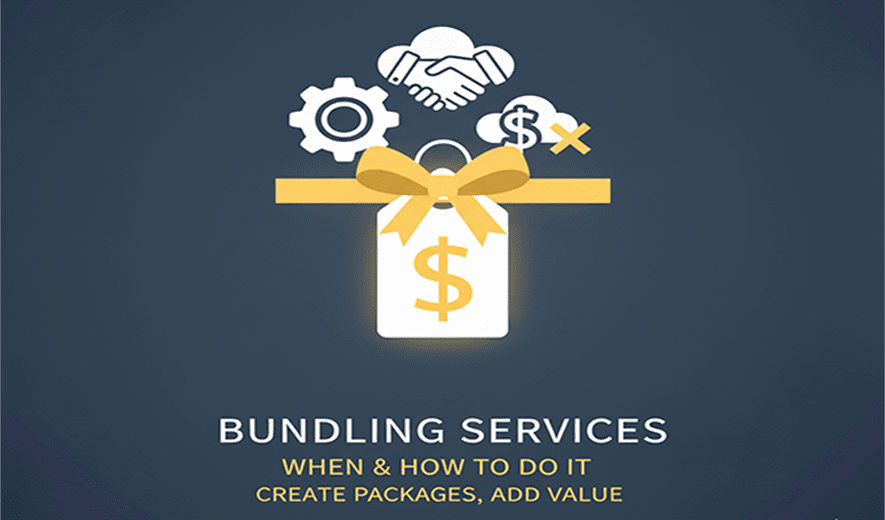
Bundling Services: When & How to Do It
Bundling services involves combining multiple services into a single package, often at a discounted price, to offer customers a more complete solution. This strategy can increase sales, improve customer loyalty, and simplify the buying process, but it requires careful planning to ensure it aligns with both customer needs and business profitability.
How to bundle services effectively
- Analyze customer needs. Start by identifying your customers' most common "pain points" and the services they frequently buy together. This can be done by reviewing sales data, customer feedback, and support tickets.
- Define bundle types. There are several common bundling models to choose from:
- Pure Bundling: Services are only sold as a package and not individually. This is ideal for integrated services where all components are necessary for the solution.
- Mixed Bundling: Customers have the option to purchase services individually or as a discounted bundle. This is the most flexible approach and caters to different customer preferences.
- Tiered Bundling: Offer "Basic," "Standard," and "Premium" versions of your service bundle with different levels of features or usage limits.
- "Build Your Own" Bundles: Allow customers to customize their own package from a list of complementary services.
- Price strategically. The bundle price should be appealing enough to encourage a bundled purchase but still profitable for your business.
- Emphasize savings: Clearly show customers the savings they are getting compared to purchasing each service separately.
- Promote value over cost: Focus on the convenience and integrated solution the bundle provides, rather than just the price.
- Avoid pricing errors: Use automation tools to ensure consistent and accurate pricing across all sales channels.
- Create clear marketing and sales messaging. Your marketing materials and sales pitches should highlight the benefits of the bundle, such as cost savings, convenience, and a complete solution.
- Use targeted messaging: Tailor your marketing to different customer segments, explaining how the bundle specifically addresses their unique needs.
- Leverage case studies: Use testimonials and examples to demonstrate how real-world clients have benefited from your bundled solutions.
- Test, monitor, and adjust. Bundling is an ongoing process. Continuously monitor key performance indicators (KPIs) like bundle conversion rates, average order value, and customer retention. Gather customer feedback to refine your bundles and ensure they remain valuable and appealing over time.
